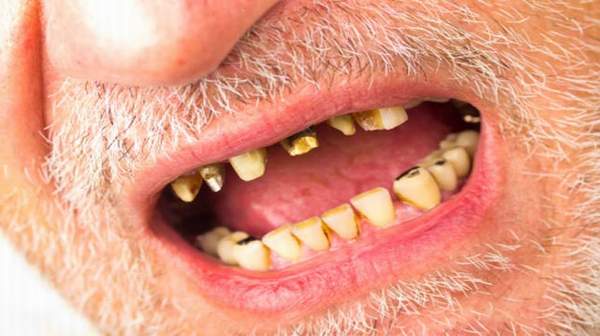What's in this article?
What is scurvy?
Scurvy is a disease caused by a diet that lacks vitamin C (ascorbic acid).
Patients develop anemia, debility, exhaustion, edema (swelling) in some parts of the body, and sometimes ulceration of the gums and loss of teeth.
The name scurvy comes from the Latin scorbutus. We have known about the disease in humans since ancient Greek and Egyptian times.
Scurvy commonly is associated with sailors in the 16th to 18th centuries who navigated long voyages without enough vitamin C and frequently perished from the condition. Modern cases of scurvy are extremely rare.
Humans cannot synthesize vitamin C, which is necessary for the production of collagen and iron absorption. We have to obtain it from external sources, i.e. from fruits and vegetables, or some foods which are fortified with vitamin C in order to prevent the vitamin C deficiency known as scurvy.
Who gets scurvy?
Scurvy was often seen in sailors on long ocean voyages described from the 15th century onwards. Many men died from the disease until it was discovered that scurvy could be effectively cured and prevented by consuming vitamin C through lemons, oranges and limes. The nickname for British sailors of ‘limey’ derives from the practice of giving British sailors limes.
It is thought that scurvy occurs very rarely in modern societies of today as most people have access to year-round fresh fruits and vegetables which are rich sources of vitamin C. However, several groups of people are at risk. These include:
- People with chronic malnutrition or those that eat less than 2 servings of fruits/vegetables per day
- Alcoholics
- Elderly
- Men who live alone (bachelor or widower scurvy)
- Children
- People on peculiar diets or food fads
- Psychiatric disease (delusions or fear of food, suicide attempt by self-starvation, eating disorders)
- People with other medical conditions that may prevent the intake and/or absorption of vitamin C
- Dialysis patients
- Inflammatory bowel disease (Crohns Disease)
- Malabsorption disorders
- Severe dyspepsia
- Under-developed third world countries where general malnutrition exists. Also, in populations that subsist mainly on cereal grains and without access to fresh fruit or vegetables.
Symptoms of scurvy
The symptoms of scurvy usually begin three months after a person stops getting enough vitamin C in their diet.
In adults, the initial symptoms of scurvy include:
- feeling very tired and weak all the time (fatigue)
- a general sense of feeling “out of sorts” such as feeling irritable and miserable all the time
- pain in your limbs particularly your legs
- the appearance of small red-blue spots on your skin
The spots develop where individual hairs grow out of the skin (hair follicles), and they often occur on the shins. Hairs in affected areas usually twist around like corkscrews and break away easily. Without treatment, the spots can grow and merge to create large dark patches on your skin.
Other symptoms then follow, including:
- swollen gums – which become soft and vulnerable to bleeding (your teeth may feel loose or fall out)
- severe joint pain, caused by bleeding inside the joints
- shortness of breath – particularly after periods of physical activity
- redness and swelling in recently healed wounds (new wounds may also fail to heal)
- easily bruised skin
Left untreated, scurvy can cause jaundice (yellowing of the skin and whites of the eyes), oedema (swelling caused by a build-up of fluid) and potentially fatal heart problems.
Scurvy in infants
In infants, the initial symptoms of scurvy include:
- lack of appetite
- irritability
- poor weight gain
- diarrhoea
- high temperature (fever) of 38C (100.4F) or above
As the condition progresses, additional symptoms include:
- pain and tenderness in the legs – which is often severe and can make a young child very upset when they’re having their nappy changed
- as with adults, the appearance of reddish-bluish spots on the skin
- the eyes bulging outwards
What causes scurvy?
The primary cause of scurvy is insufficient intake of vitamin C (ascorbic acid). This may be due to ignorance, famine, anorexia, restrictive diets (due to allergies, food fads, etc.), or difficulty orally ingesting foods. Historically, scurvy was the result of long sea voyages where sailors did not bring along enough foods with vitamin C.
Complications of scurvy
In babies and young children with scurvy, the growth of the long bones in the arms and legs is typically stunted. This is because the lack of vitamin C prompts the growth plates in the bones to prematurely harden. In people of all ages, untreated scurvy may lead to complications including anaemia, heart attack or death.
Treating scurvy
A doctor will usually be able to diagnose scurvy by asking about your symptoms and diet. They may also carry out a blood test to measure the level of vitamin C in your blood.
Treatment for scurvy is relatively straightforward. It involves taking vitamin C supplements and eating food that’s high in vitamin C. This should quickly reverse the harmful symptoms of scurvy.
The fact that a person has scurvy in the first place is usually a sign that they’re vulnerable or living a chaotic lifestyle. Referral to a dietitian, social worker or mental healthcare professional may be required to prevent further episodes of scurvy or other problems linked to malnutrition.





